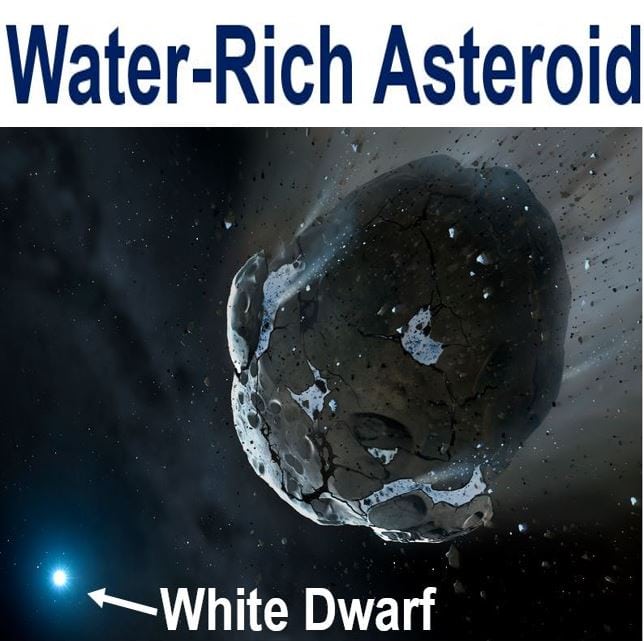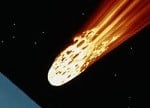The Universe is probably full of planets with water which got to them from water-laden comets and asteroids crashing into them, as occurred on Earth, which started off dry and gradually got wet after millions of collisions, say researchers from the University of Warwick.
Dr. Roberto Raddi and colleagues wrote in the journal Monthly Notices of the Royal Astronomical Society that water delivery via asteroids or comets is likely occurring at this very moment in millions of planetary systems.
The astronomers, from the University’s Astronomy and Astrophysics Group, say their findings increase the likelihood of Earth-like exoplanets having water, as well as having habitable environments, i.e. conditions where life could exist or begin. (An exoplanet is a planet that orbits a star outside our Solar System).

An artist’s sketch of a rocky and water-rich asteroid being torn apart by the powerful gravity of the white dwarf star. (Image: University of Warwick)
Comets and asteroids brought water to a young dry Earth
Earth did not start off wet, in fact, it was once fairly dry, scientists believe.
“Our research has found that, rather than being unique, water-rich asteroids similar to those found in our Solar System appear to be frequent.”
“Accordingly, many of planets may have contained a volume of water, comparable to that contained in the Earth.”
“It is believed that the Earth was initially dry, but our research strongly supports the view that the oceans we have today were created as a result of impacts by water-rich comets or asteroids.”
Difference between comets and asteroids: Comets are made of ice, dust, rocky material and organic compounds, while asteroids are made of metals and rocky material. When asteroids get near the sun they usually remain solid, while comets lose material with each orbit because their ice melts and vaporizes.
White dwarf star full of hydrogen and oxygen
The research team examined observations made by the optical/near-infrared reflecting William Herschel Telescope, located at the Observatorio del Roque de los Muchachos on the island of La Palma in the Canary Islands.
They detected enormous quantities of hydrogen and oxygen in a white dwarf star’s atmosphere. The white dwarf is known as SDSS J1242+5226.
A white dwarf is an extremely small, very dense star that is typically the size of a planet.
Evidence points to a water-rich exo-asteroid being disrupted and eventually delivering its water to SDSS J1242+5226. An exo-asteroid is an asteroid outside our Solar System.
According to data gathered and examined by the researchers, the asteroid must have been about the size of Ceres (900 km wide), the largest asteroid in our Solar System.
SDSS J1242+5226 is thought to have the equivalent of between 30% and 35% of the amount of water on Earth.
When an asteroid or comet smashes into a white dwarf or planet, the oxygen and hydrogen mix into the atmosphere. Huge amounts of the two elements were detected in this white dwarf star.
Co-author Boris Gänsicke, a professor in the University’s Department of Physics, said:
“Oxygen, which is a relatively heavy element, will sink deep down over time, and hence a while after the disruption event is over, it will no longer be visible.”
“In contrast, hydrogen is the lightest element; it will always remain floating near the surface of the white dwarf where it can easily be detected. There are many white dwarfs that hold large amounts of hydrogen in their atmospheres, and this new study suggests that this is evidence that water-rich asteroids or comets are common around other stars than the Sun.”
A team of scientists from Denmark and Australia reported in March that there are billions of stars in our galaxy with 1 to 3 planets in the Goldilocks Zone (Habitable Zone) orbiting them, an indication that the Milky Way is teeming with life.


Comments are closed.